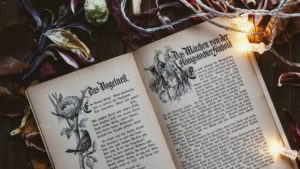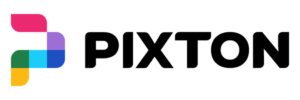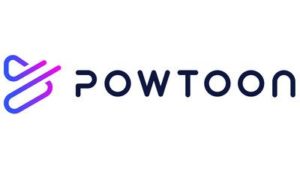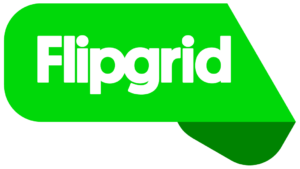On the one hand, one might ponder that the time period of February 27-April 27, 2020 has been the most disrupted eight weeks any educator, or person, has experienced in peacetime over the last hundred years. While that statement seems grand and overreaching, history will show how millions, if not billions, of people around the world stopped working, stopped going to school and stopped going out period, in reacting to the global pandemic of COVID-19. Having said that, on the other hand one might look back – at least in our small bubble of a single Master’s course in a single university – and see how this time period allowed for/ forced the agenda of a course called, “Development and Implementation of the Curriculum in Digital Learning Contexts” to “put our money where our mouth is.” Yes, we had assignments, but we also had to live our new reality of doing exactly as the course title suggested – in our jobs.
At the start of this course at the end of February, we had warnings of what was to come, but we were still teaching in classrooms, taking attendance, assigning homework, chatting with colleagues at the photocopier, and taking our classes to large assemblies. Eight weeks later, our education system is running under a new reality. We have set up virtual classrooms, recorded mini video lessons, marked photos of assignments, and conducted synchronous video meetings; that is, doing the exact contents of what our Master’s course was about. In a tragically ironic way, it could not have been timed any better. Make no mistake though, it is not something we wish to repeat. We are lucky to have all in our cohort to be healthy and virus-free. While the transition has been difficult, we are not in hospitals needing treatment. We can safely complete the Master’s course and teach our students from our own homes.

Photo by Natalia Y on Unsplash
So how does one summarize all of the learning over the past two months? Gather ’round children, and let me start from the beginning! Once upon a time…
IN THE BEGINNING…
This story does have a clear beginning, middle and, as one learns in English class, an Indeterminate Ending. We began, bright-eyed and bushy-tailed, ready to tell our digital stories. Each person in the cohort had varying degrees of familiarity and use of the myriad of digital tools to incorporate in education. For many of us, the digital tools were extras; add-ons that we used to address new ways to teach and to learn. For example, when we were asked to list the digital storytelling tools in a shared document, I listed Pixton, a website that allows students to create their own comics.  Before starting, I give my students a handout that explains the guidelines around appropriate and inappropriate content, and how private or public the content may be. Once that is reviewed, I have them create a three-panel comic that describes three “bucket list” things they would like to do. That allows them to play with the features in the program before doing the main assignment, by altering clothing, hairstyle, body shape, and other features to create their “characters.” Of course, as with many projects, I show them my own examples to give them an idea what it might look like (without copying mine).
Before starting, I give my students a handout that explains the guidelines around appropriate and inappropriate content, and how private or public the content may be. Once that is reviewed, I have them create a three-panel comic that describes three “bucket list” things they would like to do. That allows them to play with the features in the program before doing the main assignment, by altering clothing, hairstyle, body shape, and other features to create their “characters.” Of course, as with many projects, I show them my own examples to give them an idea what it might look like (without copying mine).
 This digital storytelling tool addresses many aspects of BC’s Digital Literacy Framework, including: Creativity and Innovation – specifically, using a variety of digital media to express him/herself creatively; as well as Privacy and Security – in particular, in the Digital Footprint and Reputation section regarding information that can be searched, copied and passed on. Once this assignment is complete, students can choose to publish the comic, which can be seen by others in the Pixton community, share on social media, as well as send a link to the comic, which is done to submit to me as the teacher. Even though there is no picture of the student being seen, there are still issues of privacy with students’ names attached.
This digital storytelling tool addresses many aspects of BC’s Digital Literacy Framework, including: Creativity and Innovation – specifically, using a variety of digital media to express him/herself creatively; as well as Privacy and Security – in particular, in the Digital Footprint and Reputation section regarding information that can be searched, copied and passed on. Once this assignment is complete, students can choose to publish the comic, which can be seen by others in the Pixton community, share on social media, as well as send a link to the comic, which is done to submit to me as the teacher. Even though there is no picture of the student being seen, there are still issues of privacy with students’ names attached.
The original shared document of digital tools was helpful to expand my exposure to tools that others used, and this was more relevant because they typically were tried and true; that is used successfully in the classroom and worked well enough for colleagues to recommend.
I tried Powtoon, thinking that it might be similar to Pixton, which would give me another option to use for this style of assignment. In the end, the main difference between the two applications was embedded in the names Pixton and Powtoon: Pixton is based on static comic panels, and  Powtoon is more focused on dynamic cartoon (although not exclusively cartoon) videos. As with all new resources, and especially digital tools, we try them out to gauge their effectiveness. The short example above was from a template that allowed me to change the character and text, although I stayed with the general storyline for the purposes of simplicity. The original template is below. Each has a limited option, free version, as well as upgrades to paid versions with more creative options. In the end, like most teachers, because I like to have as many arrows in my quiver, I put Powtoon into my folder of curated applications for possible future use.
Powtoon is more focused on dynamic cartoon (although not exclusively cartoon) videos. As with all new resources, and especially digital tools, we try them out to gauge their effectiveness. The short example above was from a template that allowed me to change the character and text, although I stayed with the general storyline for the purposes of simplicity. The original template is below. Each has a limited option, free version, as well as upgrades to paid versions with more creative options. In the end, like most teachers, because I like to have as many arrows in my quiver, I put Powtoon into my folder of curated applications for possible future use.
By week three of this Master’s course, even though the world was changing around us, it looked as though we may not have been affected as much as the other post-secondary courses that were not already online. As we had been conducting 100% synchronous class meetings since September 2019, all indications pointed towards “business-as-usual.” In theory, yes. Our Master’s course would not look at all different in the way it had been conducted. In practice, outside of the course, everything else had changed drastically. We possibly naively thought that we would make the necessary adjustments in our day, and just continue on. As new decisions to close down our day-to-day living came out in rapid succession, suddenly life became very complicated. Without fully understanding at first, this strongly impacted time to devote to the Master’s course, no matter how easy it was to make a “transition” to online learning. Beyond the shift that had to be made at home, which was significant in itself, in schools very few teachers had an online version of their classes ready to seamlessly transition to in case of an emergency such as this.
THE MIDDLE…
When BC’s Ministry of Education announced on Tuesday, March 17, 2020, that all schools would close to staff and student attendance because of the coronavirus pandemic, it thrust all educational partners and students into uncharted waters. No one, up to the highest level in the educational chain, had experience in navigating through a pandemic. Fortunately or not, the decision was made just days after most schools had had their last classes before Spring Break, on Friday, March 13. To give a sense of how quickly things evolved, we as a staff at my high school were called to an emergency staff meeting at lunch on that last day. We were given instruction to clean our classrooms, especially of desktops, but also other surfaces such as shelves, before leaving for Spring Break so the custodians could sanitize as much as possible over the break. For most staff, including me, this resulted in a very quick, hasty process of loading most things just into boxes, to be sorted at another time. The indication four days later, on March 17 was that the shutdown of schools was “indefinite.” In hindsight, my booking a dentist’s visit at the end of the school day on that Friday was terrible. I had no time after school to properly leave things either for myself or the custodians. When were we coming back? No one knew. What were we coming back to? No idea. How do we set up the new learning landscape? Do your best. How do we connect with students? Not sure. With many questions and no answers, this does not put anyone at ease. When your job becomes throwing darts, and your home life follows, it is no surprise that adjustments were necessary in every aspect of our lives. The Master’s course was no exception.

“Going paperless” by quinn.anya is licensed under CC BY-SA 2.0
The saving grace for me in considering the transition to online learning was that over the past few years I have been archiving all of my material into digital format. I have probably scanned over 3000 documents so I could then recycle the paper. This meant that in order to “pack up” on that last day, I just needed my thumb drive with the bulk of my teaching resources, rather than a number of binders labelled for each class. Of course anything created in the last ten years has been digital, so that was not a problem.
As we proceeded through the following weeks, each weekly topic became more connected to our lived experiences. Going through BC’s Digital Literacy Framework seemed like a road map for our setting up virtual classrooms, working out privacy issues around synchronous video meetings with minors, and looking at ways to engage students to address creative “learning opportunities,” as directed by the school district and Education ministry. At the same time, plans for our Master’s group project shifted. Our group of four, who are all local Victorians, was able to physically meet on Monday, March 16, the day before the entire shutdown of schools occurred. At that planning and recording session, we still held out hope to meet again to record our final sections. Not only did we discuss our individual focuses, but we used two different applications in Prezi and Flipgrid to describe our project. More arrows!

 The major adjustment to make in our shift was that we had planned to use the film studio set-up at Spectrum Community School. We divided our responsibilities based on that configuration. To make the change to a video without face-to-face interaction required, again from BC’s Digital Literacy Framework, much creativity and innovation. Like everyone in the bigger world around us, we had to go with plan “B,” even though we had no plan “B.”
The major adjustment to make in our shift was that we had planned to use the film studio set-up at Spectrum Community School. We divided our responsibilities based on that configuration. To make the change to a video without face-to-face interaction required, again from BC’s Digital Literacy Framework, much creativity and innovation. Like everyone in the bigger world around us, we had to go with plan “B,” even though we had no plan “B.”
![]() My part of the final project was to highlight the use of iMovie. I drew from a class project from last year that I was going to do again this year with new classes, but because of the school shutdown, could not proceed as planned. We are still doing the project, but with a finished project already, it allowed me to reflect back at the process, which was just as valuable. Our product was a “movie trailer” video with the help of an iMovie template. While we had two parts to our video, the second part – the movie trailer – included no views of students, which has made it easy to share without privacy concerns.
My part of the final project was to highlight the use of iMovie. I drew from a class project from last year that I was going to do again this year with new classes, but because of the school shutdown, could not proceed as planned. We are still doing the project, but with a finished project already, it allowed me to reflect back at the process, which was just as valuable. Our product was a “movie trailer” video with the help of an iMovie template. While we had two parts to our video, the second part – the movie trailer – included no views of students, which has made it easy to share without privacy concerns.
THE END?…
As for our indeterminate ending, while it does not apply to the Master’s course, because it is definitely ending, our educational foray into full-time work with BC’s Digital Literacy Framework, as well as use of all of the digital storytelling tools acquired during the course, continues. It has become clear over the past eight weeks that no matter how much or little our educational landscape will be permanently changed in the future because of COVID-19, the skills and tools that we have acquired – some by necessity, some by choice – will be used again. As well, the Personal Learning Networks established now will continue to guide and inform us in the future. A well-used rallying cry in the past month has been, “We’re in this together!” The same can apply both to our cohort as we support each other through the Master’s program, but also to educational colleagues moving forward in our new digital learning contexts.
Recent Comments